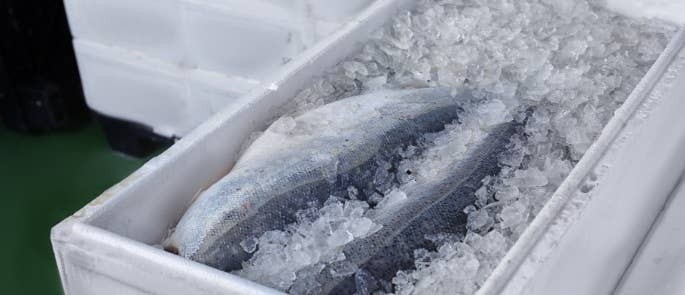Ensuring food safety is paramount, whether you’re a home cook or a professional chef. To prevent foodborne illnesses, understanding and avoiding the food temperature danger zone is crucial. This article will explore what the danger zone is, how to keep food out of it, and the importance of proper food handling practices.
The temperature danger zone is the temperature range in which bacteria thrive and multiply rapidly, potentially leading to food poisoning. Keeping food out of this zone is essential for preventing illness.
According to food safety guidelines, the danger zone lies between 40°F (4°C) and 140°F (60°C). This means food is safest when stored below 40°F (4°C) or cooked above 140°F (60°C). However, for optimal safety, it’s recommended to cook food to an internal temperature of 165°F (74°C) to kill most harmful bacteria.
Refrigeration slows down bacterial growth significantly. Storing food at or below 40°F (4°C) inhibits the multiplication of harmful microorganisms. While freezing food doesn’t kill bacteria, it does prevent them from multiplying. When thawing frozen food, it’s crucial to do so safely, either in the refrigerator, in cold water (changing the water every 30 minutes), or in the microwave, and to cook it immediately afterward.
Bacteria multiply most rapidly between 70°F (21°C) and 120°F (49°C). Some bacteria can even multiply at temperatures as low as 20°F (-7°C). Therefore, temperature control is critical in food safety.
Alt text: Frozen fish being thawed in a refrigerator to maintain a safe temperature.
Safe Food Handling Practices to Avoid the Danger Zone
Here are essential practices to keep food out of the temperature danger zone:
- Thawing Food Safely: Never thaw food at room temperature. Thaw frozen food in the refrigerator, in cold water (changing the water frequently), or in the microwave if you plan to cook it immediately afterward.
- Refrigerating Food Promptly: Refrigerate perishable foods within two hours. If the temperature is above 90°F (32°C), refrigerate within one hour.
- Cooking Food Thoroughly: Cook food to the recommended internal temperature to kill harmful bacteria. Use a food thermometer to ensure accurate temperature readings.
- Holding Hot Food Safely: Hold hot food at or above 140°F (60°C) until serving. Use warming trays, chafing dishes, or slow cookers to maintain the temperature.
- Cooling Food Properly: Cool cooked food quickly to prevent bacterial growth. Divide large quantities of food into smaller portions and refrigerate in shallow containers.
Recommended Cooking Temperatures and Times
Cooking food to the correct internal temperature is crucial for killing harmful bacteria. Here are some recommended minimum internal cooking temperatures:
- Poultry (chicken, turkey, duck): 165°F (74°C)
- Ground Meat (beef, pork, lamb): 160°F (71°C)
- Beef, Pork, Lamb (steaks, roasts, chops): 145°F (63°C) (followed by a 3-minute rest time)
- Fish and Seafood: 145°F (63°C)
- Eggs: Cook until the yolk and white are firm
While cooking to 165°F (74°C) is generally recommended, holding food at lower temperatures for longer periods can also achieve pasteurization. For example, holding poultry at 160°F (71°C) for 15 seconds has the same effect as cooking it to 165°F (74°C).
Checking Food Temperature for Safety
Using a food thermometer is the most reliable way to ensure food is cooked to a safe internal temperature. Here’s how to use it correctly:
- Insert the thermometer into the thickest part of the food, avoiding bones or fatty areas.
- Wait for the temperature to stabilize before taking a reading.
- Clean the thermometer with hot, soapy water after each use to prevent cross-contamination.
Alt text: A chef accurately measures the temperature of melted chocolate using a probe thermometer.
While visual cues, such as changes in color or texture, can indicate doneness, they are not always reliable. A food thermometer provides the most accurate assessment of food safety.
For checking the temperature of refrigerated or frozen goods during delivery, an infrared thermometer can be useful for quickly verifying that the products are within the correct temperature range without compromising the packaging.
Maintaining proper temperatures in refrigerators and freezers is also essential. Commercial units typically have built-in thermometers, and regular temperature checks should be part of a business’s Hazard Analysis and Critical Control Points (HACCP) procedures. For domestic refrigerators and freezers, a separate temperature gauge can be used to monitor the temperature.
Beyond temperature control, good hygiene practices are also crucial for preventing foodborne illnesses. Washing hands thoroughly and frequently, especially before and after handling food, is paramount. Cleaning and sanitizing work surfaces and utensils can prevent cross-contamination.
Temperature Danger Zone Chart
A Temperature Danger Zone Chart is a helpful visual aid to remind you of the temperature ranges to avoid and the safe temperature zones for storing and cooking food. These charts are often available for free download and can be displayed in kitchens as a quick reference guide.
Alt text: A food safety chart illustrating the temperature danger zone, safe holding temperatures, and minimum cooking temperatures.
By understanding the danger zone of food temperature and implementing proper food handling practices, you can significantly reduce the risk of foodborne illnesses and ensure the safety of the food you prepare.
